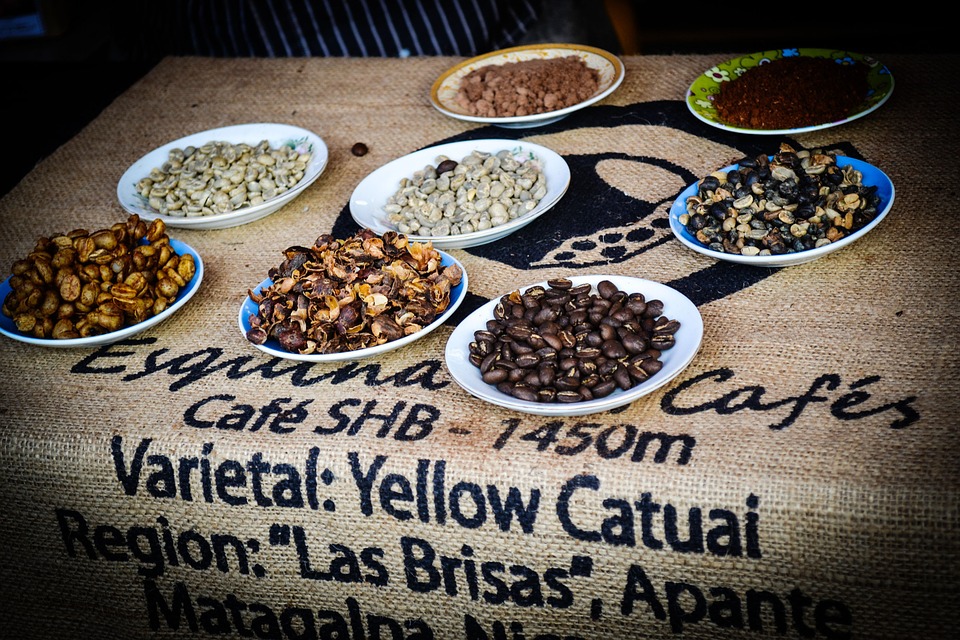Only Arabica coffee is grown in Nicaragua. The production area occupying more than 100 thousand hectares takes place primarily in the northern and central areas of the mountains.
The highest plantations (600-1500 m) of the Central American countries may be found here, for which the tropical climate and volcanic soil is favorable. So, the Nicaraguan coffee is of good quality, with distinctive, fruity aromas.
Coffee came relatively late
In spite of the excellent environmental conditions, the coffee came to Nicaragua relatively late, in the second half of the nineteenth century. The newcomer spreaded quite fastly; the government offered a reward of five cents for the planting of each coffee shrub, thus encouraging the establishment of plantations.

One hundred years later, in 1992, they have planted more coffee than any other crop. The coffee recompensed the confidence invested in it and contributed significantly to the economic and environmental development of the country. However, the road to success was very long.
Authoritarian regimes and disasters
The economic growth was followed by a devastating earthquake, authoritarian regimes, insurrections, the Cold War and the Civil War. The coffee industry barely managed to survive this series of misfortunes, it soon faced another difficulty: in 1998, a hurricane destroyed the coffee plantations ensuring the livelihoods of tens of thousands of farmers and roads required for the transportation of crops.
The next disaster was the coffee crisis in 1999-2003, which, together with frequent droughts put an end to the rise of coffee industry. Coffee prices have sunk so low that even the harvest was loss-making, so the fruits were not harvested. The farmers had no money for the maintenance of their lands and their children’s education, so they mostly emigrated or lived by social assistance.

Thanks to the land reform fought out by the trade unions, finally thousands of families obtained plantations again. The co-operatives began to organize themselves to adapt more easily to the new demands of coffee.
Today, the largest umbrella organization is the Nicaraguan Coffee Small Producers Co-operatives Association (Asociación de Cooperativas de Pequeños Productores de Café de Nicaragua, CAFENICA) compacts more than 80% of the smallholder businesses committed to Fairtrade.
It also represents their economic and political interests at national and international level both. 95% of the workers are working at the 45-thousand small, micro and small enterprises who produce high quality specialty coffees.
Organic coffee culture
In the eighties, the organic coffee culture of Fair Trade began to spread in Nicaragua. A growing emphasis was put on infrastructure development, quality assurance programs, vocational training, scholarships, environmental projects and the boosting of agro-eco-tourism within the framework of export-oriented small farmers’ organizations.
The transportation of the coffee became to grow faster due to the continuous development of infrastructure, so the coffee quality also improved.
Coffee is Nicaragua’s main export, which provided approximately $ 200 million in revenue annually and created more than 280 thousand jobs, which is a considerable achievement in a country of six million people struggling with a nearly 50% unemployment.
Cultivation in the shade
The vast majority of Nicaraguan coffee is cultivated in the shade (95%) of trees. This results in a tastier, sweeter coffee, whereas the fruits grow slower in the shadow, while it’s natural sugar content remains higher.
On the other hand, the coffee will also be healthier, because the plant may grow up in it’s natural environment, in an organic way (without the need of a fertilizer). The family-run businesses plant the coffee in the shade of different exotic, indigenous tree species -such as avocado or orange- to preserve forests and maintain biodiversity.
The coffee compensates the persistent efforts by Nicaraguan coffee growers by creating jobs and high-quality exportable products, the protection and sustainable management of soil and water and the promoting of wildlife.
